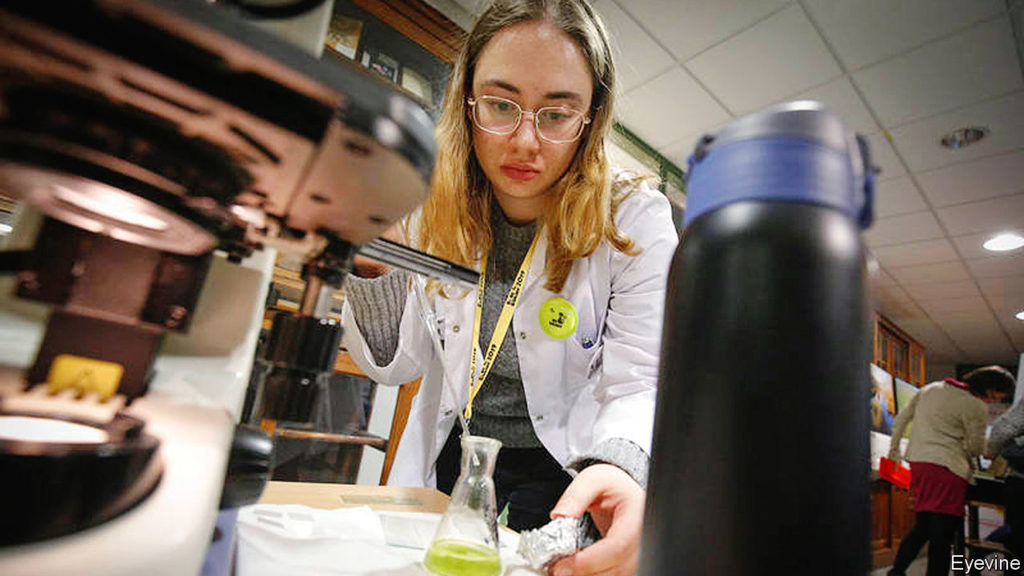Science is still a man’s world. Since 1903, when Marie Curie first won the Nobel Prize, almost 600 blokes but only 19 women have taken home the coveted award in physics, chemistry or medicine. In the realms of more ordinary talent, just 28% of the world’s researchers are women. Even in the eu, where the sexes are more equal than in other parts of the world, a mere two-fifths of scientists and engineers are women. In Germany and Finland, it is less than one in three.
Eastern Europe bucks the global trend, according to a recent report from Leiden University in the Netherlands. In Lithuania, 57% of scientists and engineers are women. Bulgaria and Latvia follow close behind, at 52%. Universities in Poland and Serbia were ranked among the best in the world for gender equality in research publications. South-east Europe is roughly at parity: 49% of scientific researchers in the region are women. Some of this is a legacy of Soviet times, when communist regimes pressed both men and women into scientific careers and did not always give them a choice about it. The coercion has gone, but the habit of women working in labs has remained.
In Europe today, campaigners to get more women into top boffin jobs complain of a “leaky pipeline”: many women end their involvement with stem subjects (science, technology, engineering and maths) after finishing college. However, a study by Microsoft finds that female role models strongly increase girls’ interest in these subjects.
According to the European Institute for Gender Equality, closing the gap between men and women in stem would lead to an increase in the EU’s GDP per capita by at least 3% by 2050 and create over 1.2m jobs. Over the past decade, employment in Europe’s tech sector has grown four times faster than overall employment. But the European Commission predicts that by 2020, the region’s growth could be hampered by a shortage of 500,000 information and communications technology (ICT) workers.
In 2017 more than half of eu businesses that tried to recruit ICT specialists had trouble filling the vacancies. Lithuania, which has Europe’s narrowest employment gap between the sexes, and Bulgaria, which has the highest proportion of women in ict specialised jobs in the region, found it easier.
Source: The Economist

